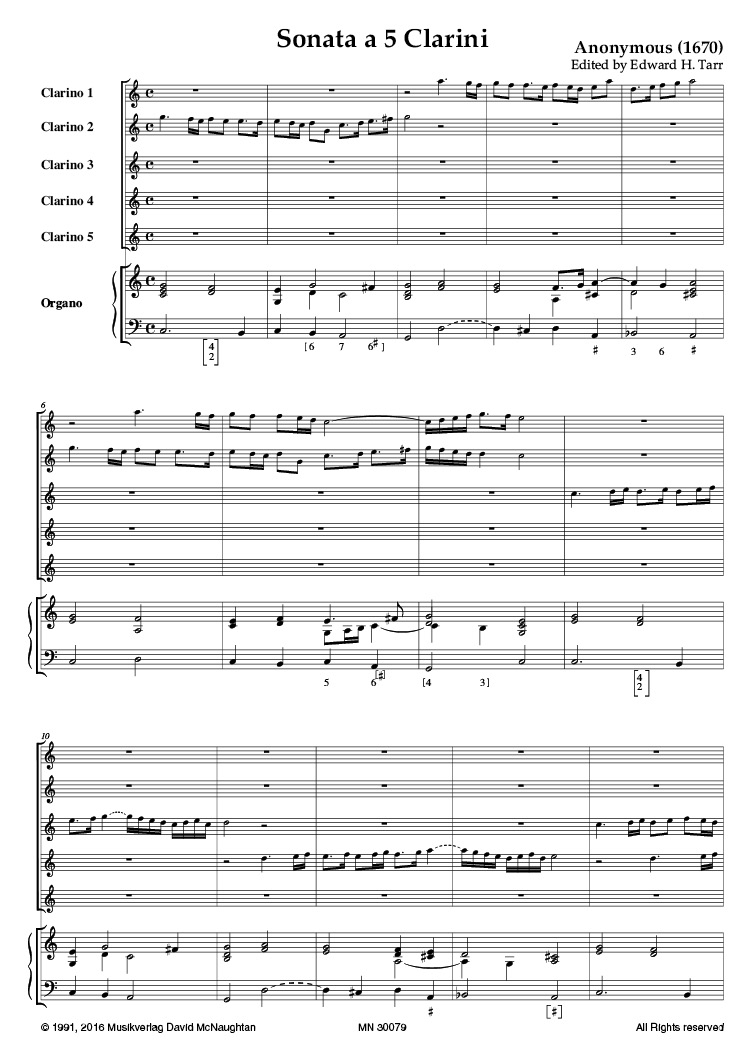
Anon/Tarr Sonata à 5 Clarini
Instrumentation: 5 Trumpets, B. c.Difficulty (I-VI): V
Parts for:
Parts I-V: Clarino (Trumpet) in C
Part VI: B. c. (Organ)
Series: Edward Tarr Brass
Editor: Edward H. Tarr
This little work forms part of the vast collection of music formerly belonging to Karl Liechtenstein-Kastelkorn, Prince-Bishop of Olmuetz (who reigned from 1664 to 1695), and originally preserved at his residence in Kremsier (today: Kroměřiž, Czechoslovakia). It is not mentioned in any of the standard bibliographies of trumpet literature.
Music of this type, for multiple trumpets and basso continuo, is quite rare. From the same geographic area, Bohemia, two important works by H. I. F. Biber (1644-1704) from 1668 and 1673 for six and eight trumpets respectively, timpani, and basso continuo, have survived. The present anonymous sonata from 1670 is, then, the third of its type known to us.
Biber was the first important composer to work in Kremsier, taking French leave in 1670 to establish himself in Salzburg, from where, by the way, he continued to send manuscripts of music to the Prince-Bishop of Olmuetz for performance there. Biber‘s successor as music director in Kremsier was the Court and Field Trumpeter, Pavel Josef Vejvanovský (1639/40-1693). Other composers either active in Kremsier or sending their music, like Biber, to the archives there, were Antonio Bertali (1605-1669), P. August Kerzinger (fl. c. 1650), Aless- andro Poglietti (d. 1683), Ferdinand Tobias Richter (1649-1711), P. Philipp Jacob Rittler (fl. 2nd half, 17th c.), Johann Heinrich Schmelzer (1623-1680), and P. Jan Křtitel Tolar (fl. c. 1675). Bertali, Poglietti, Richter, and Schmelzer were all active at the imperial Hapsburg court of Vienna. All of these composers, who represent some of the best talent of their time, wrote for the trumpet.
The present sonata might have been composed by one of these gentlemen, but it could also be the work of one of their students. Speaking against the authorship of a famous composer is the work‘s very anonymity, not to mention the many mistakes in part-writing, some of which, however, could also be the errors of a copyist. It is in a single movement but displays several sections, as was typical for this category of composition at that time. All five trumpeters are expected to play in the clarino register; the first is twice required to ascend to high c“‘, while the fifth has a rather low part descending to c, the rarely-used second partial of the harmonic series.


